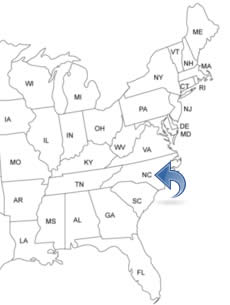NORTH CAROLINA PEOPLE SEARCH!
- ✔ Contact Info
- ✔ Phone Numbers
- ✔ Criminal Records
- ✔ Income Info
- ✔ Neighbors
- ✔ People's Age
- ✔ Property Ownership
- ✔ And Much More
Charlotte, North Carolina
Charlotte is located in the south-central part and is the largest city in the U.S. State of North Carolina. Charlotte is a major financial center and is the second largest banking center in the USA after New York City. Charlotte is also a major center in the US motorsports industry. Most of the NASCAR industry's employees and drivers are based in Charlotte or nearby.
To See And To Do In Charlotte
- Independence Park
- Golf
- Center Of The Earth Gallery
- Afro-American Cultural Center
- Levine Museum Of The New South
- The Mint Museum
- The Nature Museum
- Neighborhood Theater
- The Charlotte Museum Of History
- Charlotte Trolley Museum
- Verizon Wireless Amphitheater
- Bojangles Coliseum
- Latta Park
- James K Polk Historic Site
- The Green
- Fourth Ward Park
- Downtown
- BEET Contemporary Crafts And Function Art
- Freedom Park
- Hezekiah Alexander House
- Wing Haven Gardens and Bird Sanctuary
- Carolinas Aviation Museum
- Bechtler Museum of Modern Art
- NASCAR
History Of Charlotte - Timeline
In 1740, a rifle factory was established in the area. In 1750, churches were built in the area. Also in 1750, the number of Native Americans drops dramatically in the area as a result of battles with other tribes and with settlers. Many Native Americans also died of diseases brought by the colonists, such as smallpox, chicken pox, measles and yellow fever.
In 1755, the area that is now Charlotte was permanently settled. In 1762, the settlers named the village to Charlotte in honor of the Queen Charlotte Sophia. In 1764, the first sale of a slave is officially recorded.
In 1768, Charlotte was incorporated as a town. In 1771, Queens College opened. In 1786, there were 276 people living in Charlotte. In 1791, George Washington visited Charlotte. In 1792, a U.S. Postal Service is established in Charlotte.
In 1799, a young boy found a 17-pound rock, which his family used as a doorstop. A couple of years later they found out that it was gold. The family accepts $3.50 for the gold but the gold was worth over $3,000. It started the nation's first gold rush.
In 1800, slaves are forbidden to meet in groups or learn to read. In 1822, the Charlotte Female Academy opened. In 1825, there were 700 people living in Charlotte. There were wagon makers, taverns, tailors, weavers, and there were 14 stores in the town. In 1829, Andrew Jackson who grew up near Charlotte became the seventh president of the United States.
In 1834, the First Charlotte Bank opened. In 1835, Charlotte is the gold mining capital in the U.S. In 1852, the railroad was completed. In 1856, the Charlotte Female Institute opened.
In 1860, many slaves are granted their freedom from their owners. In 1862, fifteen hundred men and boys were working at Charlotte's Confederate Navy Yard, where shells, gunpowder, and ammunition were made during the Civil War. In 1869, the Daily Charlotte Observer was published.
In 1878, the first hospital opened. In 1880, the Charlotte Cotton Mill started their business. In 1887, the first professional fire department was established. In 1891, the trolley cars were powered by electricity.
In 1900, the first automobiles were seen in the town. The businessman Oswald Barringer drove one of them and the other by Dr. C.G. McManaway. In 1915, the Ford Motor Company factory opened in Charlotte. In 1922, one of the nation's first radio stations, WBT, starts their broadcasting in Charlotte. In 1936, Charlotte's airport opened. In 1949, WBTV in Charlotte started.
In 1957, four young black people in Charlotte tested the new laws against school segregation. People were angry and throw things at them and called them names. In 1959, the first enclosed retail shopping center in the Carolinas opened.
In 1970, Southpark shopping mall opened. In 1974, a DC-9 crashed near the runway at Charlotte-Douglas Airport and 72 people were killed. In 1994, a DC-9 again crashed near the airport and 37 people were killed.

